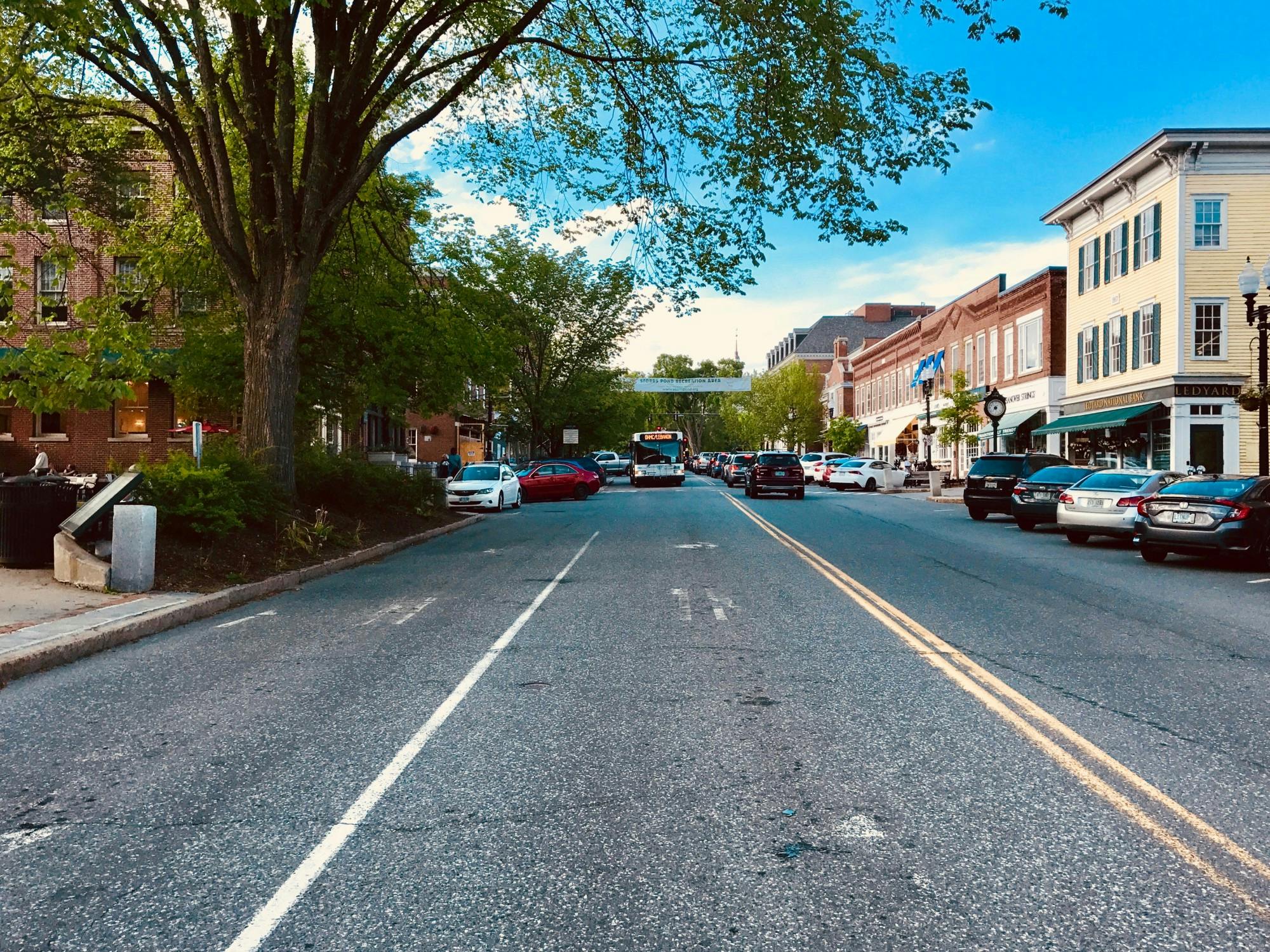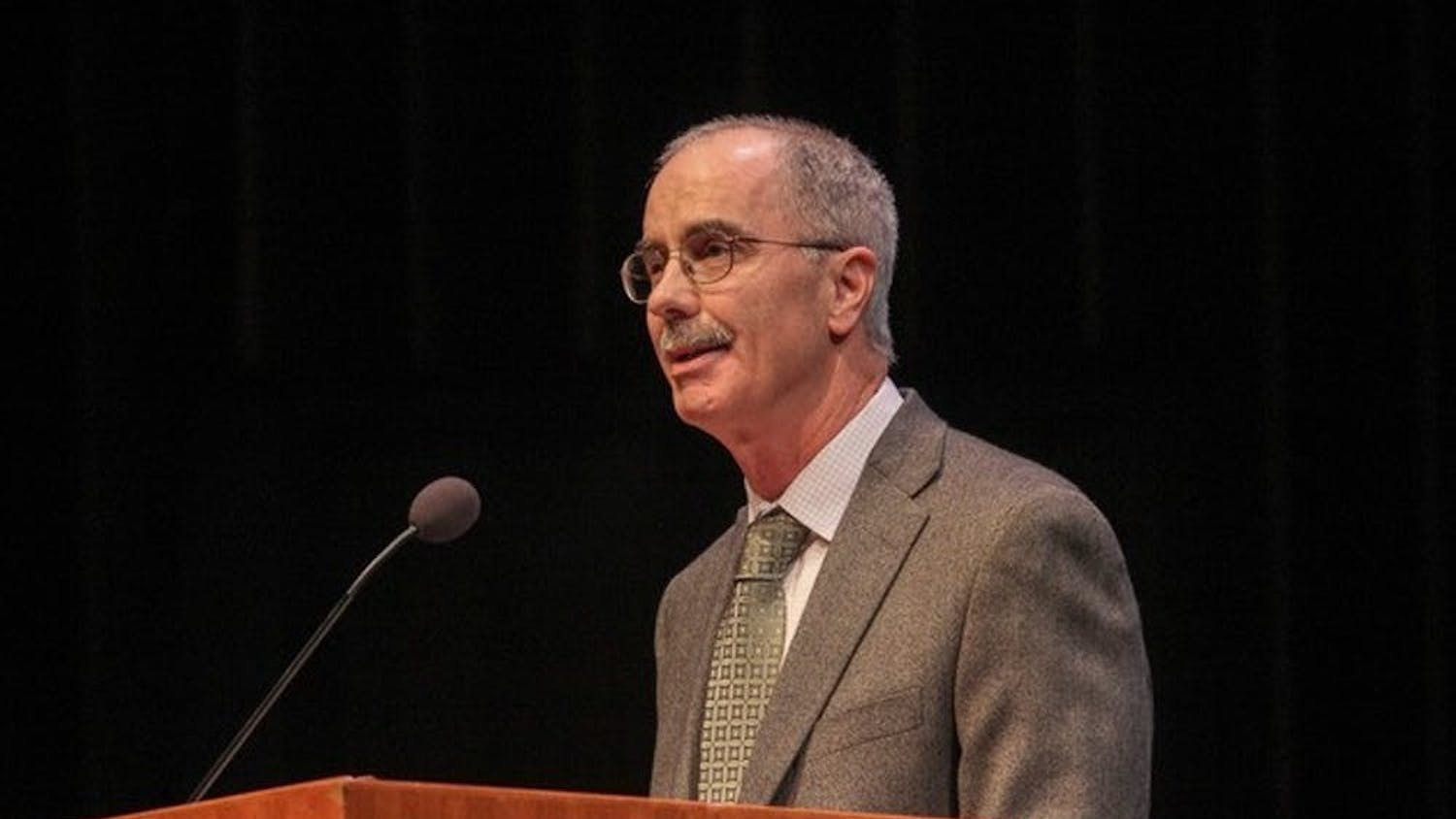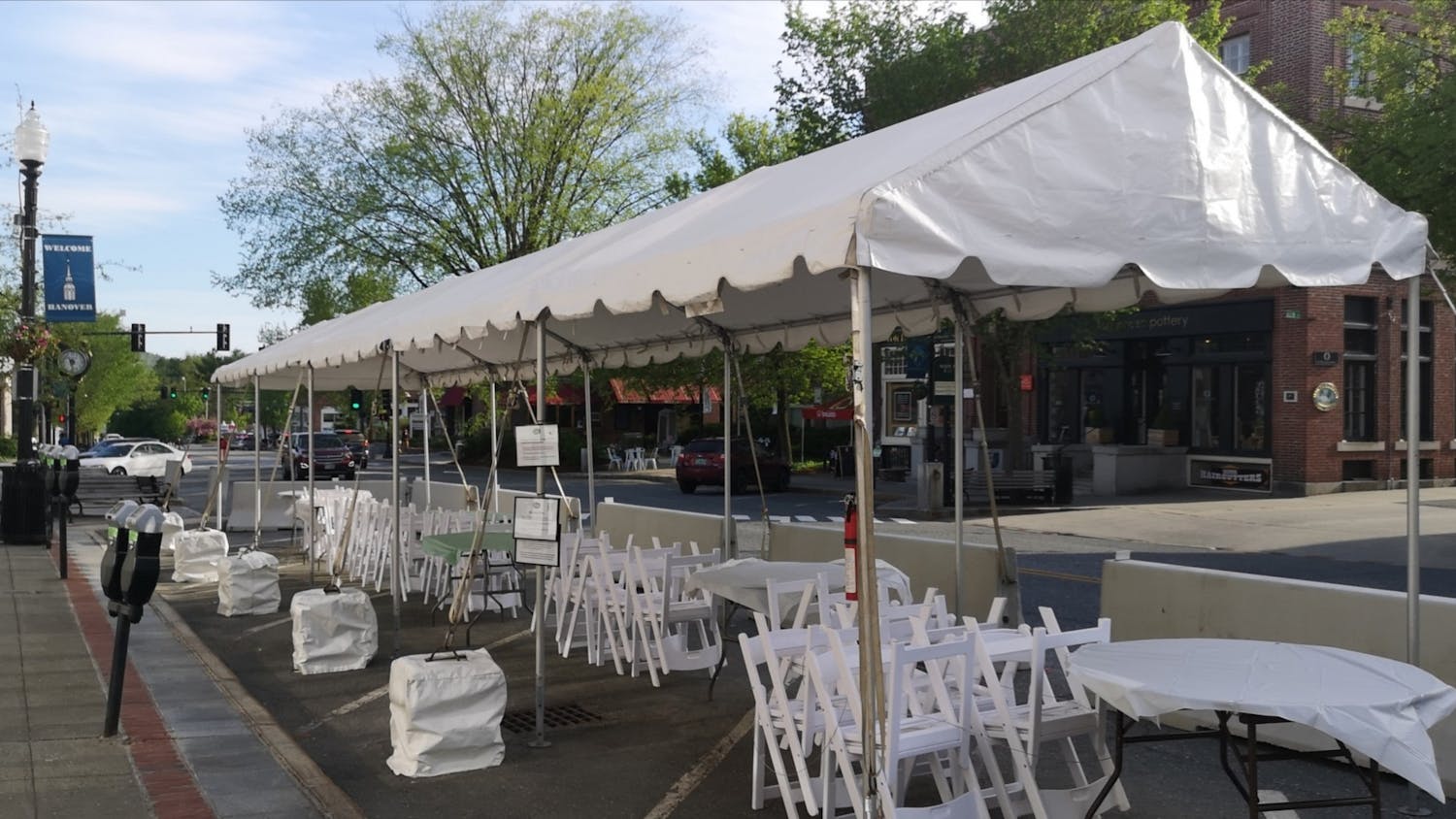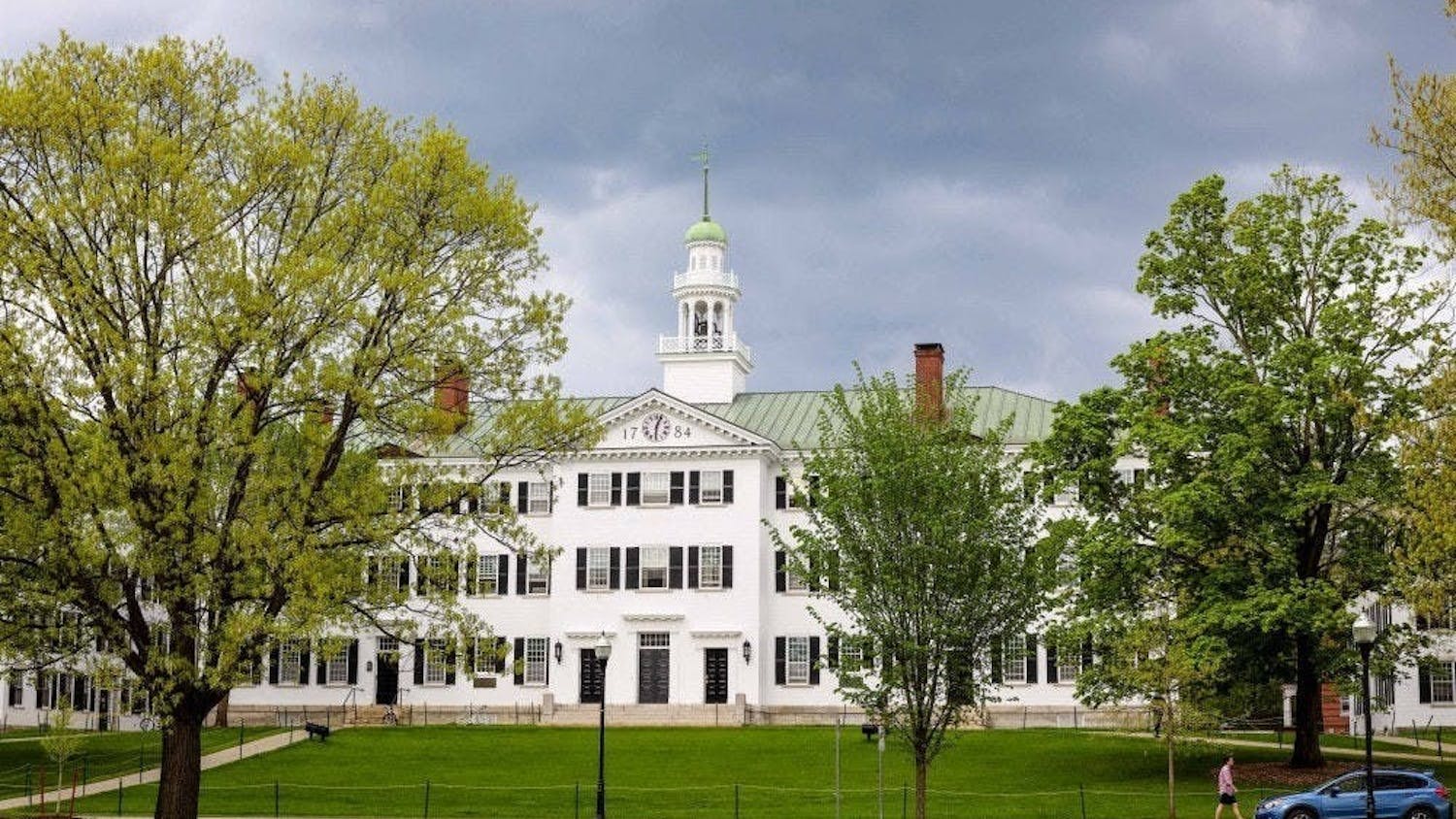According to data released by the Small Business Administration on July 6, a total of 165 businesses in Hanover were approved for loans under the Paycheck Protection Program, a federal relief effort established under the Coronavirus Aid, Relief, and Economic Security Act. All in all, the PPP loans helped retain 1,991 jobs in Hanover, according to the dataset.
The program, administered by the SBA and carried out through banks, is designed to help small businesses maintain their operations and continue to pay their workers during the COVID-19 pandemic through forgivable loans. The first round of $349 billion, distributed nationwide on a first-come, first-served basis, was exhausted in less than two weeks between April 2 and April 16. After Congress passed a bill with additional funding, the second round of loan applications resumed on April 27 and will end on August 8, an extension from the original deadline of June 6.
In Hanover, 102 businesses were approved for PPP loans during the first round and 63 additional businesses received loans during the second round.
Since the program was launched, there have been several adaptations to the rules that would qualify businesses for loan forgiveness. Currently, if businesses demonstrate that they spent at least 60 percent of the loan on payroll expenses in 24 weeks — a relaxation of the original requirement to spend 75 percent of the loan in eight weeks — they qualify for loan forgiveness.
According to the dataset, from April to the end of June, 135 businesses in Hanover received $5.4 million in loans up to $150,000. Thirty businesses received PPP loans that exceed $150,000. For loans over $150,000, a range is listed, but not the exact loan amount.
The Hanover Co-op and Kendal at Hanover, a retirement home, received loans of between $2 million and $5 million. Dartmouth Printing Company received between $1 and $2 million.
Six businesses, including Molly’s Restaurant and Jesse’s Steakhouse, received between $350,000 and $1 million. The remaining 21 businesses, including Base Camp Cafe, received between $150,000 and $350,000. Businesses that applied for loans under $150,000 had their names redacted.
Most businesses in Hanover that received PPP loans are privately-owned companies, but 21 nonprofit organizations and childcare centers also received funding.
Ledyard National Bank and Mascoma Bank were the two main lenders to businesses in Hanover, distributing over 70 percent of the loans in the town and supporting over 1,200 jobs.
The application process
While applying for PPP loans was relatively straightforward for some, many business owners in Hanover said the process was “stressful,” with some encountering errors during the application process and delays in receiving their loans.
Jarett Berke Tu’17, owner of Lou’s Restaurant and Bakery, worked with Ledyard National Bank and obtained a PPP loan for his restaurant during the first round. He said he was the first person to submit his application through the Ledyard National Bank, and he received the funding in around three business days.
Cradle and Crayon Inc, a non-profit daycare provider in Hanover, worked with Mascoma Bank and secured a PPP loan during the first round, according to Cradle and Crayon executive director Brenda Danielson. Afraid of being unable to obtain the loan in time, she said she and her assistant “worked around the clock” and delivered the application paperwork to the bank over the weekend, adding that the details about the application were always changing.
“We [were] building the plane as we were flying in [it],” Danielson said. “Things kept changing up until the last minute.”
Candle and Crayon’s loan was between $150,000 and $350,000 and helped them retain 21 jobs, according to the SBA dataset.
According to Mascoma Bank CEO Clay Adams ’93, there was “a lot of confusion” for both his clients and the bankers when the program was first launched.
“Some of the details have been aggravating for [not only] borrowers but also lenders,” Adams said. “But I think something that came together as quickly as this one did, that's understandable.”
Adams said that to expedite the process, Mascoma Bank streamlined the hard-copy application and designed an automated system that directly submits information to the SBA. He added that his bank helped retain about 15,000 jobs and issued more than $145 million in PPP loans.
In addition to the changing rules of the loan application, Adams noted that his bank’s work involving PPP loan applications was “very front-loaded.” Mascoma Bank has processed approximately 1,500 applications as of July 28, 500 of which came in the first 48 hours after the program was launched in April.
Owner of bookstore and coffee shop Still North Books & Bar Allie Levy ’11 said after finding out that her initial PPP loan application was processed incorrectly by a bank that was “dealing with a large volume of applications,” she started to work on another application with a different bank and received her loan during the second round.
In Hanover, local banks like Ledyard National Bank and Mascoma Bank provided over 70 percent of the loans in town. Only 16 businesses in Hanover chose large national banks, such as Citizens Bank, Bank of America and TD Bank, as their PPP lenders.
According to Hanover town manager Julia Griffin, businesses that worked with large national banks for their PPP loan applications did not receive the same level of “handholding and service” that businesses that worked with local banks did.
“I heard time and time again from the businesses that were banking with the big banks, that they couldn't even get a return phone call,” Griffin said. “Whereas the Mascoma and Ledyard Banks were right there, working 70, 80 hours a week, their lenders were just up to their eyeballs, first trying to digest all the requirements of the program, getting ready to process all those loan requests and then just push them through as quickly and as effectively as they could.”
President of Upper Valley Business Alliance Tracy Hutchins said that because of the existing partnerships that some businesses already established with local banks, the loan applications were “more expedient” for those businesses.
“It’s just because all those applications [to national banks] that went to a central location for processing, there was just a huge, overwhelming demand,” Hutchins said. “And so in that case, having a relationship with a local institution made the process easier and quicker for those applicants.”
The program’s effectiveness and complications
Many business owners said they intend to spend their PPP loans largely on payroll, but also plan to dedicate some portions to rent and utilities. Some businesses managed to maintain their entire workforce because of the program’s funding, while others had to lay off some workers.
Berke said the PPP loan has been a “lifeline” for his business, and although the restaurant’s sales at one point dropped about 70 percent, the program’s fund helped him retain and pay all employees who work at least 30 hours per week. Since then, he has actually hired one additional employee.
Danielson said her organization used the entire PPP loan on teachers' salaries and benefits, and no employees have been laid off.
“We would not be in business [without the PPP loan],” she said.
Not all business owners found PPP loans to be as useful. Anthony Barnett, owner of the primarily dine-in restaurants Molly’s Restaurant and Jesse’s Steakhouse, said he did not end up taking his PPP loan right away because under the increased unemployment benefits of $600/week, it was better for his employees to receive unemployment benefits than to come to work. He added that he decided to take the loan when he learned that the terms of forgiveness would be changed to spending 60 percent of the loan on payroll.
Barnett received a loan of between $350,000 and $1,000,000 for Molly’s and Jesse’s, which helped to retain 76 jobs, according to the SBA dataset.
According to Griffin and Hutchins, the additional $600 in unemployment benefits, on top of New Hampshire unemployment compensation, have allowed some employees, particularly those working lower- and minimum-wage jobs in the retail and restaurant sector, to earn more income on unemployment than they would have if the restaurant had kept them on as employees and paid them using the PPP loan.
“The program itself, it had a lot of unintended consequences,” Hutchins said. “There were just things that were sort of counteracting against each other.”
Even with PPP loans, some businesses were unable to keep all their workers employed. Barnett said his two restaurants are only staffed with 60 to 70 percent of what his typical workforce would be this time of the year.
“I mean, the PPP loan has been helpful, but getting the loan is only half of it,” Barnett said. “The other half is the forgiveness part, and we just don't know where we're at with that yet.”
Levy said that between a decrease in sales of 50 percent, most of it coming from fewer purchases of coffee and baked goods, and the ambiguity regarding the details of loan forgiveness, she decided to keep her business’s payroll in line with its revenue and laid off 10 part-time employees.
“There have been revisions [about the terms of the PPP loans] and they're changing,” she said. “So at the end of the day, I think we won't really know exactly how useful the program [is] until we're out of this whole situation.”
In Washington, a bipartisan bill called the Paycheck Protection Small Business Forgiveness Act has been introduced in the Senate that would allow small businesses who received a PPP loan of $150,000 or less to obtain automatic forgiveness.
Adams said while 85 percent of loans his bank distributed were under $150,000, they represent only 20 percent of the total money loaned out. He added that “it would be a good thing” if the legislation were passed because he believes that the relatively small number of large borrowers “deserve more scrutiny.”
Both Berke and Danielson said they expect that their PPP loans would be fully forgiven. Barnett noted that he doesn’t expect to achieve full forgiveness of his PPP loan but having a portion be forgiven “would be fantastic.” Levy said she understands that her PPP loan might not be forgiven at all, adding she feels comfortable with the one percent interest rate that she needs to pay back on it.
Future outlook
With further federal legislation unclear and the COVID-19 pandemic continuing to rage in many parts of the country, Hanover business owners said they are worried about the uncertainties that lie ahead for their industries.
Danielson said her organization has almost exhausted the PPP loan and that she would need extra grants to keep her employees on staff, adding that she believes child care centers in general should be provided with the assistance they need to maintain their programs and that it should be a priority of the federal government.
Berke noted that he is concerned about another “flare-up” of the virus locally during the colder seasons, which might force his restaurant to cease both outdoor and indoor dining. In that case, he said, he could not continue to employ all his workers without additional government funding or some other sources of revenue.
Hanover’s business outlook faces “uncertainty on multiple levels,” Griffin said, as it not only relies on assistance from the federal government that is still being debated but also depends on the course of the virus in the near future. As a result, she emphasized that the federal government should provide more support for businesses.
“I can't say enough how helpful the federal programs have been, and I think they should be extended to the fullest extent possible,” she said. “If there were ever a time when [the country] needs to be running up a deficit, it's now because it's do or die, particularly for small businesses across America.”
Some business owners are more optimistic in part due to the community support that they have received during the pandemic. Barnett said his customers have been ordering takeout and purchasing gift cards, and that he “has confidence” that businesses are going to “bounce back.”
Levy stressed that for her business, community support is even more important than government assistance.
“So far we have seen that [it’s] the community ... support that has sustained [our] sales,” she said. “That is really what's going to get us through [the pandemic] more so than the [PPP] loan.”




